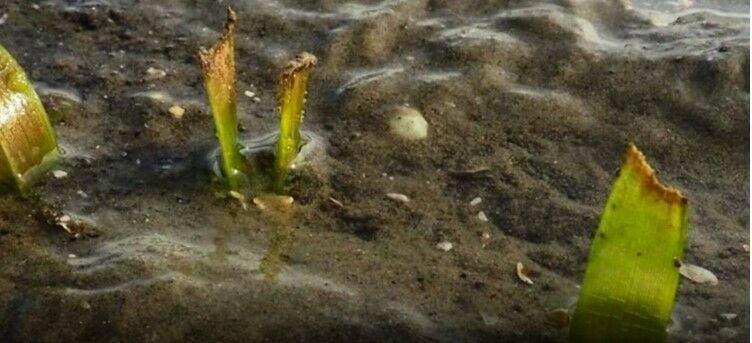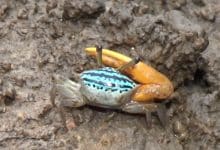Dugongs’ dinner dilemma: Seagrass vanishing act sparks fears for marine giants

The disappearance of vital seagrass in the southern province of Trang has marine scientists and conservationists on high alert. The dwindling seagrass, a key food source for dugongs, has raised concerns over the fate of these gentle sea mammals.
Seagrass, the culinary delight of dugongs, is vanishing at an alarming rate from the pristine seas off Thailand’s southern province of Trang. The culprit? The relentless dredging of the Kantang waterway for navigation and business expansion, deposited sediments that suffocate the once-lush seagrass beds.
This worrying trend has spurred marine scientists and conservationists into action, striving to uncover the precise causes and save the marine ecosystem.
Director of the Marine and Coastal Resources Research Centre (Southern Andaman Sea), Santi Nilawat revealed that dredging-induced sediment accumulation is a suspected culprit but further studies are crucial to pinpoint the exact cause or causes.
A 2021 survey conducted in Ao Kham, in front of Pak Meng pier, showcased over 80 hectares of flourishing seagrass. However, a recent survey identified a distressing depletion in six areas, intensifying concerns.
“While the gradual loss of seagrass may not currently pose a threat to the 188 dugongs in the seas off Trang, it demands immediate attention.”
Potential threats
Santi pointed out that seagrass still covers 3,200 hectares, a sufficient quantity given each dugong consumes an average of 1.5 kilogrammes of seagrass daily. Yet, potential threats loom large on the horizon.
One potential menace arises from the growing number of green sea turtles in the region. The Andaman Foundation proposed a year ago to halt the release of young turtles from hatcheries into the sea, suspecting a connection with the seagrass disappearance. However, further investigations are underway to establish a conclusive link, reported Thai PBS World.
Another contributing factor is the ominous seagrass-wasting disease. Although not yet detected in Thai waters, a team of scientists from the Faculty of Fisheries at Kasetsart University is diligently researching to unravel this aquatic mystery.
Associate Professor Chatcharee Kaewsuralikhit, from the Department of Fisheries Biology, shed light on the seasonal ebb and flow of seagrass.
“If sediments persist in being dumped onto the seabed, seagrass faces extinction with no chance of regrowth.”
Drawing parallels with Australian waters, where seagrass wasting disease has been identified, the urgency to address these threats becomes crystal clear.
Latest Thailand News
Follow The Thaiger on Google News:


























